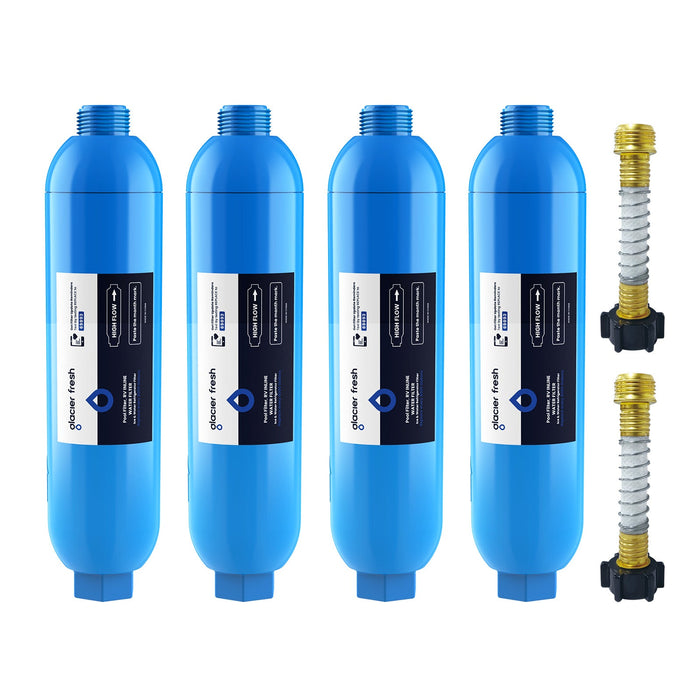Unlock the Secrets to Ultimate Hydration for Your Next Outdoor Adventure!
When embarking on an outdoor adventure, staying hydrated is not just important; it's essential for safety and performance. Whether you're hiking through rugged terrains, biking along winding trails, or camping in the wilderness, the challenges of keeping hydrated can vary greatly. Factors such as the intensity of the activity, environmental conditions, and personal physiology all play a role in your hydration needs. Choosing the right hydration system for your adventure rig is crucial to ensure you’re prepared for anything Mother Nature throws your way. In this article, we'll explore the various types of hydration systems available for adventure rigs, discuss how to optimize your hydration strategy, and share personal insights that will help you stay refreshed and energized on your next journey.

Understanding Hydration Needs for Outdoor Activities
Hydration needs can differ significantly depending on the type of activity you engage in, the duration of your adventure, and the environmental conditions you face. For instance, a leisurely hike on a cool day may require less water than an intense mountain bike ride on a hot afternoon. Dehydration can lead to reduced physical performance, impaired cognitive function, and even serious health issues if left unaddressed. It's essential to adopt proactive hydration strategies, such as drinking water regularly rather than waiting until you're thirsty. A research study I came across highlighted that many outdoor enthusiasts underestimate their water intake needs, particularly during strenuous activities. Always remember, your body loses water through sweat and respiration, so keeping a close eye on your hydration levels can make all the difference in enjoying the great outdoors.
Types of Hydration Systems for Adventure Rigs
When it comes to hydration systems for adventure rigs, there are several options to consider. Each type has its own unique advantages and disadvantages, making them more suitable for specific activities or personal preferences. Understanding these options helps you choose the best solution for your outdoor adventures.
Water Bottles
Water bottles remain one of the most popular choices for hydration during outdoor activities. Their portability and ease of use make them a convenient option for many adventurers. Available in various materials like stainless steel, plastic, and glass, water bottles come with features such as insulated designs that keep beverages cold or hot for extended periods. Additionally, they can easily be stored in backpacks or attached to gear. However, one potential downside is that you may need to stop and take a sip, which can disrupt your flow during high-energy activities.
Hydration Packs
Hydration packs are an excellent choice for those looking for hands-free hydration. These packs allow you to sip water through a tube, making it easy to stay hydrated while on the move. They typically have a larger capacity compared to standard water bottles, which is ideal for long hikes or bike rides. However, choosing a hydration pack that fits well and is comfortable to wear is crucial, as an ill-fitting pack can lead to discomfort or chafing over time.
Built-In Hydration Systems
Built-in hydration systems are increasingly popular in adventure rigs, offering convenience by integrating hydration directly into your gear. These systems often include a reservoir that can be filled with water and connected to a drinking tube for easy access. While they provide seamless hydration, maintenance can be a challenge, particularly when it comes to cleaning the reservoir and ensuring it’s filled before you hit the trail.
Optimizing Hydration During Outdoor Activities
To truly optimize your hydration strategy during outdoor activities, consider establishing a hydration schedule. Aim to drink water at regular intervals, especially during strenuous activities. Recognizing the symptoms of dehydration—such as fatigue, dizziness, or dry mouth—is crucial, as these signs can creep up on you. Moreover, maintaining an electrolyte balance is vital, as you lose essential salts through sweat. This is particularly important during hot weather or intense exertion; incorporating electrolyte-rich drinks can help replenish what your body loses. Lastly, consider how temperature and your exertion level affect your hydration needs. For instance, during a recent summer hike, I noticed that I needed to drink significantly more water than during cooler months. Being aware of these factors can help you stay ahead of dehydration and ensure a successful adventure.
Key Takeaways for Hydration on Your Adventures
In summary, staying hydrated is a vital aspect of enjoying your outdoor adventures to the fullest. By choosing the right hydration system—whether it’s a water bottle, hydration pack, or a built-in setup—you can ensure that you have easy access to water during your activities. Moreover, adopting effective hydration strategies, including recognizing dehydration symptoms and maintaining electrolyte balance, will enhance your overall outdoor experience. As you prepare for future trips, take a moment to evaluate your hydration strategies and make adjustments where necessary. Remember, proper hydration is not just about quenching your thirst; it’s about ensuring your safety and enjoyment while exploring the great outdoors!








